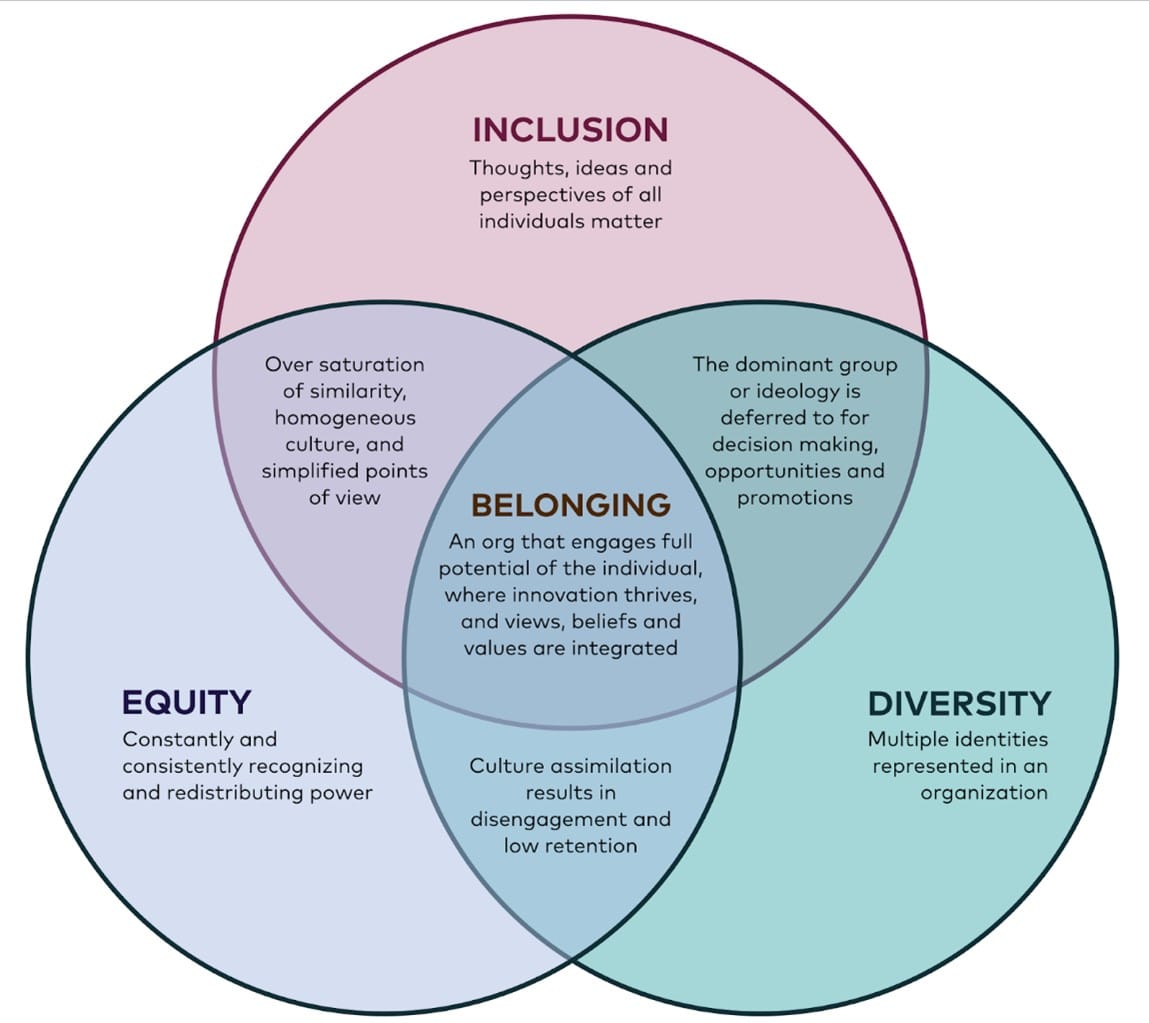The Meaning of Diversity and Inclusion in the Workplace

Image Source: Harver
With the unstoppable forward march of technology, cultural assimilation and evolution, human rights and social justice movements, mass immigration, and business expansion, organizations face a sophisticated and rapidly changing workforce globally.
While the situation would have ordinarily presented a thorny path to the recruitment and retention of talent, business owners and human resources leaders have found solace in two words, namely: “diversity” and “inclusion”.
Therefore, in this post, we explore the meaning of diversity and inclusion in the workplace as well as the types, aspects, and benefits.
What does diversity in the workplace mean?
Diversity in the workplace means that an organization’s workforce is made up of a varying team of people that sufficiently reflect the makeup of the society in which the business finds itself.
Since variety is the spice of life, diversity flavours an organization’s workforce.
Essentially, the meaning of diversity implies embracing the various elements that make individuals distinct and unique from one another.
What are the types of diversity?
Conversations about diversity must acknowledge there are many factors that make individuals distinct from one another. However, classifying them helps businesses identify gaps in diversity, and provides metrics for companies to set targets and make pooled efforts to boost diversity.
-
Internal Diversity:
This refers to the features and situations of a person’s life which the person found themself in without their own making. Such elements are neither the person’s choice nor fault, and cannot just be changed.
People are products of nature.
Instances of internal diversity include the following:
- Race
- Age
- Ethnicity
- Cultural Identity
- Assigned Sex
- Physical Ability
- Mental Ability
-
External Diversity:
As much as people are products of nature, they also are products of nurture.
External diversity covers elements that a person was not born with. Such features are impacted by a person’s surroundings and the people he comes in contact with. Generally, they can be changed over time by the person.
To name a few, here are some examples of external diversity:
- Religious beliefs
- Personal interests
- Citizenship
- Location
- Socioeconomic status
-
Organizational Diversity:
This type of diversity deals with workforce attributes that mark one employee from another.
Once the business involves more than one person, there is some sort of organizational diversity.
The factors of organizational diversity belong and relate to the work or the organization as opposed to the individual. Hence, the alternative name “functional diversity”.
Organizational diversity appears in terms of:
- Job function
- Work location
- Union affiliation
- Pay type
-
Worldview Diversity:
Even before people are employed, they already have their perceptions and outlook on life. A person’s worldview is framed by an array of factors such as his encounters, associations, knowledge of history, and even personal reflections.
Such instances of worldview diversity are:
- Political beliefs
- Moral and ethical values
- Philosophical views
It is worth mentioning that there is a much shallower classification of diversity, viz: visible diversity and invisible diversity. Visible diversity includes elements that meet the eye, such as race, age, physical appearance, gender, etc.
Invisible diversity refers to factors that are not seen physically, for example, religious beliefs, educational background, political beliefs, moral values, sexual orientation, etc.
We have laid out some tips on how you can bump your diversity strategy up a notch!
What does inclusion in the workplace mean?
A discussion of the concept and meaning of diversity is never complete without due attention to inclusion.
Inclusion refers to the degree to which an individual in an organization feels “included”, i.e. embraced, assisted, and appreciated as part and parcel of the business.
It also refers to the traits that ensure that all employees are treated properly, with due respect and equal access to opportunities and the necessary wherewithal, as well as the latitude to contribute wholly to the organization’s results.
Each employee must give and receive inclusion from others. This implies that inclusion requires people from varying backgrounds to cooperate and understand one another’s expectations, needs, and views.
Diversity originally creates room for the input of different kinds of people. Inclusion makes the actual input from those different kinds of people a reality, for the ultimate good of the organization.
What are the various aspects of inclusion?
The term “inclusion” could ordinarily come across as merely theoretical. Thankfully, Peter Downs’ 7 pillars of inclusion help with a better understanding and a firm approach necessary for the actual implementation of inclusion.
These pillars or aspects are what help inclusion come to fruition in organizations. They are discussed below.
-
Access:
This aspect of inclusion in an organization explores the need for a welcoming and accepting environment as well as the habits that foster its realization. It touches on matters such as how people are greeted and discussing with the various members of a workforce about their needs, and ultimately effecting reasonable changes to take care of any handicaps.
Even prior to the employment stage, accessibility during the hiring process matters, and is worth improving.
-
Attitude:
True inclusion lies in its demonstration. For every organization, the focal lens should be on practical manifestations of inclusion as opposed to mere declarations of it. This is because there lies a large divide between positive intentions and actual behaviour.
-
Choice:
Inclusion is incomplete without getting an idea of the different options that people want, as well as how they want to participate, and meeting the need. Where there are multiple choices, more people will get involved because there will be something for everyone.
-
Partnerships:
No man is an island. The “partnership” pillar of inclusion pays attention to how interpersonal and organizational relationships are formed, as well as their efficacy. Whether a formal partnership or an informal one, the connection of individuals is a tenet of inclusion.
-
Communication:
How are employees informed about the available options and the general workplace culture? Communication as a pillar of inclusion emphasizes mindfulness of how you say what you say. Be sure that it suits the recipient of the message.
-
Policy:
For inclusion to be seen in an organization, the organization needs to commit to it and take responsibility for it. The company needs to make a statement about inclusion, express what it means to them, and then lay down and enforce rules which show its seriousness about inclusion.
-
Opportunities:
As an aspect of inclusion, it seeks to discover the options available to people from less privileged origins. It peers into the dynamics and processes that influence the opportunities available to even the minorities in the workplace.
Benefits of Diversity and Inclusion at Work
Having discussed the meaning of diversity and inclusion, here are some benefits of enforcing them in the workplace:
- Diversity and inclusion initiatives help address different kinds of unconscious bias.
- Diversity and inclusion lead to increased corporate innovation.
- Greater diversity and inclusion ensure better recruitment and more employee retention.
- Companies with higher diversity have more than the average sales, market share and profitability.

